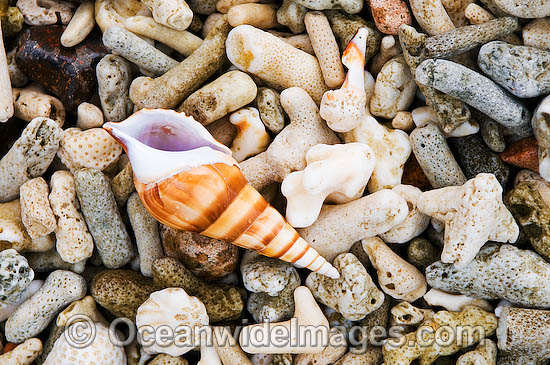We sure spend a lot of time making our aquariums look  great, don’t we?
Coral selection, rock placement, and overall layout of the aquascape are all things that seem to occupy a lot of our time when planning or setting up a reef tank, and rightfully so. If the aquarium is the canvas, thse items are the media which we work with. With beautiful live rock and new, colorful invertebrates showing up all the time, it’s easier than ever to create a beautiful reef aquarium!
So why are we still treating the aquairum substrate as an afterthought? “What are you talking about, Fellman? You throw some sand on the bottom and bingo-on to the next thing…!” Well, not so fast there- you do have alternatives to the usual oolithic aragonite, you know! How about incorporating some different materials into your substrate and creating some interest there? Trust me- I’ve been fortunate to travel all over the country and visit some beautiful aquariums, and it’s rare that I see anything other than plain white sand on the bottom of the tank. We seem to be caught up in some kind of substrate “rut”!
If you’re inclined to use sand, why not try a different color? Products like Seachem’s “Tidal” substrates offer interesting variations in color and texture, and have the added advantage of buffering. “Indo Pacific Black” sand by CaribSea provides a unique “salt and pepper” look to your aquascape and provides great color contrast.
If you keep fishes such as Jawfishes, you could incorporate some larger substrate grades and colors into your run-of-the-mill sandbed for a “purposeful” bottom with an added aesthetic punch. Vary the colors and textures of your substrate whenever possible…For that matter, vary the depth as well. This breaks up the monotony of a perfectly symmetrical bottom.
In the mood for something totally different? Get out the hammer and make some rubble! Mix up the sizes, ranging from the sisze of a pea to the size of a ping pong ball, through that on the bottom, and you’ve created a “rubble bottom”, which provides aesthetic interest, foraging for your wrasses and Centropyge angels, protection for larval fishes, and a great surface for attaching (deliberately or otherwise) coral frags and zoanthids! Don’t believe the hype about “detritus accumulation”. If you have good husbandry habits, brisk water movement, and some small fishes, there should be little to worry about.
Still need something even more “out there”? How about a bottom comprised of living corals, such as Green Star Polyps, Xenia, or if you really have the cash, Ricordea! This idea is really more affordable in a small system, but it can create a very unique look! Or, if you are just plain kooky (who in this hobby isn’t, right?), create a “Living Kaleidescope Bottom” in your nano tank, comprised of corralimorphs and zoanthids glued to a bunch of Turbo or Astrea snails. As the snails move about the bottom (slowly!), you get an ever-changing, insanely colorful “living substrate”! Of course, I’m sure that the “Society For Prevention of Cruelty to Snails” will roast me for the suggestion, but I suppose it’s the price you you pay for being a visionary!
Like so many other aspects of the hobby, you’re only limited by your creatvity and self expression (and pocketboock!), so think outside the box and “get to the bottom of things” with an innovative substrate in your reef system!




